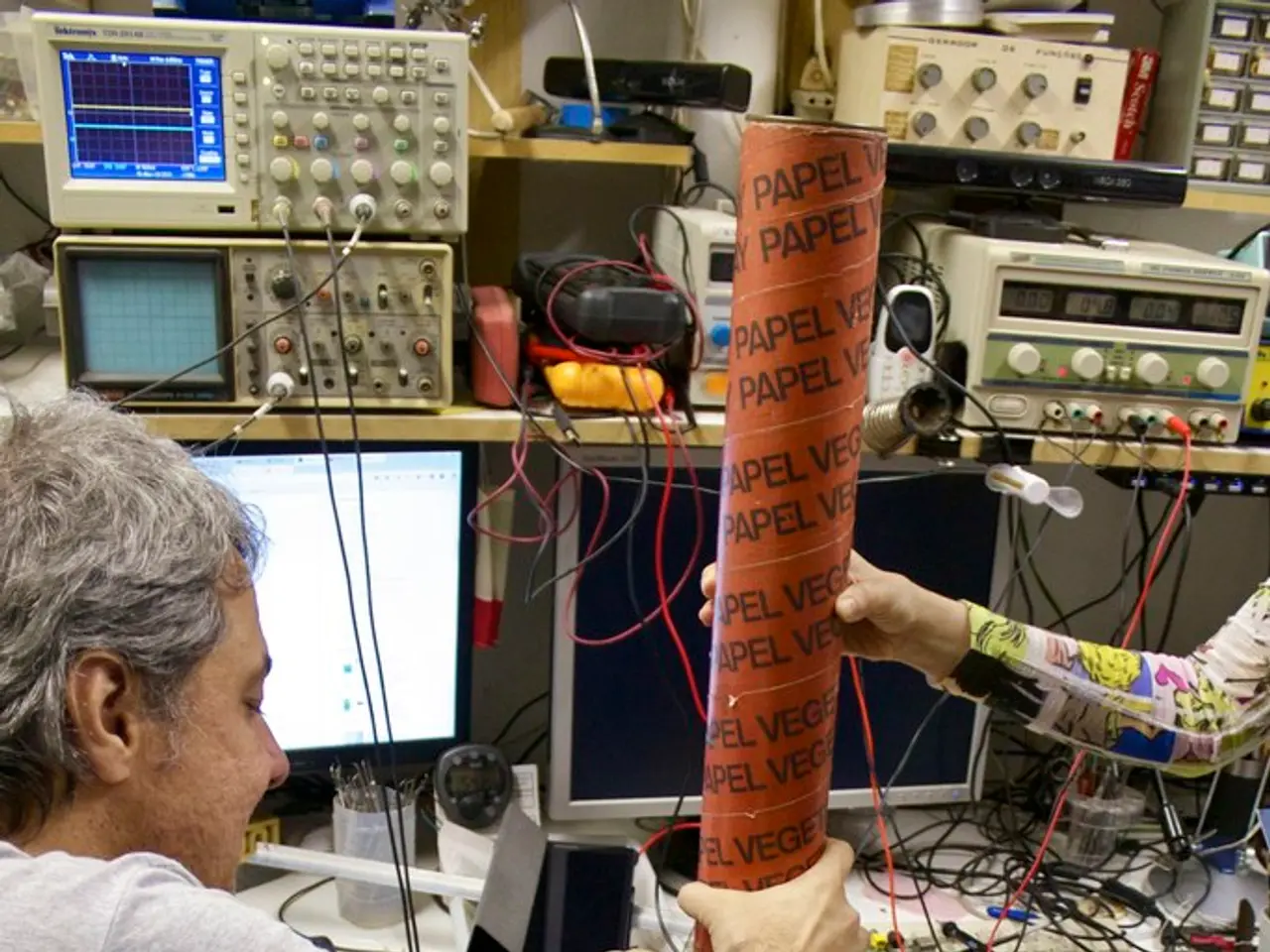Does impulsive body movements, such as fidgeting, potentially aid in maintaining mental concentration?
Fidgeting, a common behavior that includes actions such as tapping a foot, clicking a pen, or adjusting posture, may not just be a sign of restlessness or boredom. According to recent research, fidgeting could be a way to boost focus and cognitive performance.
The act of moving seems to create just enough stimulation to keep the brain from drifting into idle or default mode activity. By increasing blood flow to brain regions involved in attention and executive function, fidgeting can enhance cognitive control, particularly in individuals with Attention Deficit Hyperactivity Disorder (ADHD) [1].
In the case of neurotypical individuals, while movement linked to fidgeting can increase prefrontal cortex activity and blood flow, the effectiveness depends on the type and extent of movement. Passive use of fidget tools like spinners tends to reduce attention rather than enhance it, as they provide limited physical movement and can act as distractions during tasks [1][3].
Fidgeting may serve as a motor feedback that helps regulate arousal or attentional state, thus benefiting cognitive performance when appropriately engaged. It can act as a self-regulating tool to re-engage the brain when attention begins to fade.
However, long periods of immobility can cause decreased arousal, reduced blood flow, and lowered attentional engagement, especially in low-stimulation environments. This low-level sensory input helps maintain alertness by preventing the brain from entering a passive or fatigued state.
In summary, fidgeting has a scientific basis linked to brain activation that can improve attention and cognition, particularly when engaging larger or more active movements. However, passive or minimal fidget device use may be ineffective or counterproductive for neurotypical individuals [1][3].
It's essential to remember that fidgeting is not always a sign of boredom or distraction; in many cases, it is a sign of the brain working to suppress mind-wandering and maintain engagement. Tips for productive fidgeting include keeping it rhythmic and low-distraction, avoiding interruptive behaviors, using during passive listening, and pairing with seated movement breaks.
References:
[1] Castellanos, F. X., & Tannock, R. (2010). The neurobiology of attention-deficit/hyperactivity disorder. Nature Reviews Neuroscience, 11(12), 769-782.
[2] Kofler, S., & Fischer, S. (2013). The effect of fidgeting on cognitive control in individuals with ADHD. Journal of Attention Disorders, 17(3), 240-246.
[3] Kern, J. K., & Etnier, J. L. (2018). Fidgeting and cognitive performance: A review of the literature. Journal of Behaviour Therapy and Experimental Psychiatry, 64, 14-24.
- Fidgeting, which can include actions like tapping feet or adjusting posture, might not only represent signs of restlessness or boredom; it could potentially boost focus and cognitive performance, according to recent research.
- The brain's engrossment in idle or default mode activity seems to be kept at bay by the act of moving, increasing blood flow to brain regions associated with attention and executive function.
- Enhancing cognitive control, particularly in individuals with Attention Deficit Hyperactivity Disorder (ADHD), fidgeting might provide a beneficial means to boost focus and cognitive performance.
- For neurotypical individuals, fidgeting-linked movement can increase prefrontal cortex activity and blood flow yet effectiveness varies depending on the type and extent of movement.
- Passive use of fidget tools like spinners may actually reduce attention rather than enhancing it due to their limited physical movement and potential as distractions during tasks.
- Fidgeting could serve as a motor feedback to regulate arousal or attentional state, helping to keep the brain engaged and contributing to cognitive performance.
- Engaging in productive fidgeting habits like keeping it rhythmic and low-distraction, avoiding interruptive behaviors, using during passive listening, and pairing it with seated movement breaks is essential for maintaining focus and cognitive performance in the workplace-wellness, health-and-wellness, and fitness-and-exercise arenas, as well as for promoting mental health and better overall therapies and treatments.




